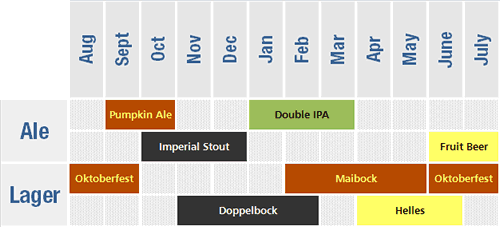ABV: 4.7 %
OG: 1.054 SG
FG: 1.013 SG
IBU's: 22.5 IBUs
Cals: 151.6 kcal/12oz
Boil Size: 7.78 gal
Boil Time: 60 mins
Efficiency: 72.00 %
| Amt | Name | Type | # | %/IBU |
|---|---|---|---|---|
| 48.33 oz | Pumpkin (canned) (Mash 0.0 mins) | Flavor | 1 | - |
| 7 lbs 7.5 oz | Pale Malt (2 Row) US (2.0 SRM) | Grain | 2 | 71.7 % |
| 1 lbs 10.6 oz | Munich Malt (9.0 SRM) | Grain | 3 | 15.9 % |
| 10.3 oz | Caramel/Crystal Malt - 60L (60.0 SRM) | Grain | 4 | 6.2 % |
| 6.9 oz | Biscuit Malt (23.0 SRM) | Grain | 5 | 4.1 % |
| 3.4 oz | Caramel/Crystal Malt -120L (120.0 SRM) | Grain | 6 | 2.1 % |
| Amt | Name | Type | # | %/IBU |
|---|---|---|---|---|
| 0.45 oz | Columbus (Tomahawk) [14.00 %] - Boil 60.0 min | Hop | 7 | 22.5 IBUs |
| 0.88 oz | Ginger Root (Boil 12.0 mins) | Herb | 8 | - |
| 0.15 oz | Cinnamon Stick (Boil 5.0 mins) | Spice | 9 | - |
| 0.29 oz | Cloves (Boil 0.0 mins) | Spice | 10 | - |
| 0.15 mg | Nutmeg (whole, crushed) (Boil 0.0 mins) | Spice | 11 | - |
| Amt | Name | Type | # | %/IBU |
|---|---|---|---|---|
| 1.0 pkg | American Ale II (Wyeast Labs #1272) [124.21 ml] | Yeast | 12 | - |








